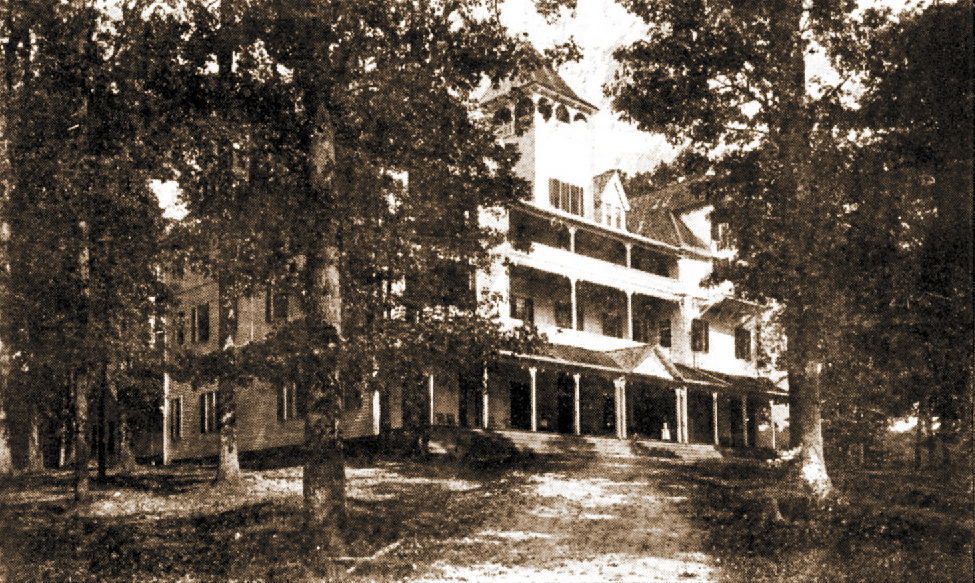“Flames destroy Fountain City Sanitarium. Seventy-five room building owned by Dr. Goetz is burned to ground. Twenty-one patients rescued, loss about $65,000. Lack of fire protection places neighboring structures in jeopardy. Cause is laid to defective flue.”
Those were the headlines on the front page of the Knoxville Journal and Tribune on January 6, 1920. Thus ended a mystery of many years’ duration.
N.L. Hicks’ chapter in Mary Rothrock’s definitive Knox County history, “The French-Broad Holston Country” (1946, 1972), had informed history on the month and year of the fire, but the specific day of the month and a newspaper account of the fire had eluded many local historians.
Not Don Ault, a John Adair descendant and author of a lengthy list of articles on our Fountain City history. Ault had prepared a number of documents on our important landmarks some years ago. His backgrounder on the Fountain Head Hotel, containing the exact date of the fire, was in a group of papers left by another prominent local historian, Evelyn Kirby. The last sentence of Ault’s document titled “Fountain Head Hotel” read: “Destroyed. Monday afternoon, January 5, 1920, by fire (see newspaper).”
A trip to the C.M. McClung Collection at the East Tennessee History Center led to the microfilm room and a comprehensive group of early newspaper microfilms. Included on the front page of that 1920 issue of the Journal and Tribune was a lengthy story on the fire. That and the November 13, 1941, destruction of the Mynatt Building (including the Fountain City Bank) probably represent the largest two fires in our history.
The history of the Fountain Head Hotel and its successor, the Goetz Sanitarium, began in 1885 when a group of investors contracted with architects Stephenson and Getaz to design and build a 125-by-45-foot, four-story hotel that would occupy the ridge overlooking Fountain City park with its massive spring and giant oak trees. The impressive 40-50 room hotel was occupied in February 1886 and attracted prominent Knoxville and East Tennessee families for week-long stays as well as many for only a day or two.
Lexington (Kentucky) capitalist Col. J. C. Woodward bought the hotel in 1890 and markedly enhanced it, adding bathrooms with hot and cold water on each floor as well as a bandstand and pavilion for dancing in the park. With the addition of the heart-shaped lake in 1894, the attraction became the Fountain Head Hotel and Resort and morphed into an even more popular destination place.

H.E. Goetz, M.D. (1874-1927). Dr. Goetz had special training in New York and became nationally known for his expertise in the treatment of nervous and mental diseases at his Fountain City sanitarium. (Courtesy of the C.M. McClung Historical Collection)
Eventually, the hotel’s popularity languished and it changed hands a number of times but was finally bought by Dr. H.E. Goetz (1874-1927). Goetz had special training in New York in treating mental and nervous diseases and established a national reputation. He practiced in the Deaderick Building in downtown Knoxville but also had a sanitarium at 3000 North Broadway (near Atlantic Avenue).
In 1918, he bought and refurbished the Fountain Head Hotel so that it provided 75 rooms. The sanitarium was considered to be the largest and best-equipped in the state if not in the South and one of the largest all-wooden structures in the county. At the time of the fire there were 21 patients in residence, most of them on the first and second floors.
Miss Jessie Edmondson, the head nurse, discovered the smoke coming from a rear room on the second floor. Apparently, the fire had ignited from a furnace flue and had burned inside the wall in one of the rooms for some time. When she discovered it, many rooms on that floor were filled with smoke.
At almost 5 p.m., Dr. Goetz was still in the office downtown, but nurse Edmondson promptly alerted the house physician, Dr. Paul Ruble, and all the attendants on duty. As per their instructions, all early efforts were devoted to evacuating the patients and, since they were all ambulatory, they were quickly moved outdoors.
As soon as they were out, the staff and several volunteers commandeered the 30 fire extinguishers on the premises and began to fight the flames where they could. Although it was outside the city, Chief Sam D. Boyd and Engine Company No. 8 from Oakwood responded, and the fire was contained sufficiently to enable the removal of objects from the first floor, saving some $8,000 in furniture and medical equipment.
No lives were lost, but a tragedy was barely avoided when a volunteer heard a loud sound in one of the second-floor rooms when a fire extinguisher fell to the floor. Dr. Goetz’ 19-year-old son, Frank, was discovered unconscious on the floor, overcome by smoke inhalation. He had entered the room to recover some personal effects. Dragged to safety, he was taken to a neighbor’s house in serious but not life-threatening condition.
As the structure burned to the ground, all of the 21 patients were re-located, many to nearby Odd Fellows Hall, which had been rapidly prepared for them, or to other local hospitals. For hours the fire department and volunteers fought successfully to prevent escaping embers from burning through the roof of the First Baptist Church or those of adjacent homes.
Dr. Goetz stated immediately that he would rebuild and did so. Until 1927, the year of his untimely death at only 53 years of age, he maintained the sanitarium at what had become 107 Evergreen Lane (now the parking lot of Fountain City Presbyterian Church). His family lived there for several years, but the structure eventually became the Manor House Apartments which many will remember.
Author’s Note: Thanks to Don Ault for his recording of so much of Fountain City’s history. He and N.L. Hicks, Frank Johnson, Frank Jennings and Evelyn Kirby left a legacy for other historians to emulate.


